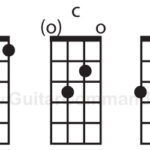As a dedicated content creator for guitarplayers.net, I’ve always been captivated by rhythm action games. During the genre’s peak, I eagerly embraced every Guitar Hero and Rock Band release, even as mainstream interest waned. Therefore, the simultaneous resurgence of both franchises in 2015 was a monumental event for me. The distinct approaches each title took only heightened the excitement.
However, it’s realistic to assume that many gamers, especially those new to the genre or returning after a hiatus, might only opt for one game. This begs the crucial question: Guitar Hero Live or Rock Band 4 – which one is the superior choice?
Having personally invested in both games upon their release and dedicated considerable time to each, I believe I’m well-positioned to offer an objective and detailed comparison to guide your decision. Let’s dive in and see which game rocks harder.
Round 1: Backwards Compatibility
For newcomers, backwards compatibility might not be a primary concern. Yet, many households still harbor collections of plastic instruments from previous console generations. A game that allows you to utilize these existing peripherals is undoubtedly a plus.
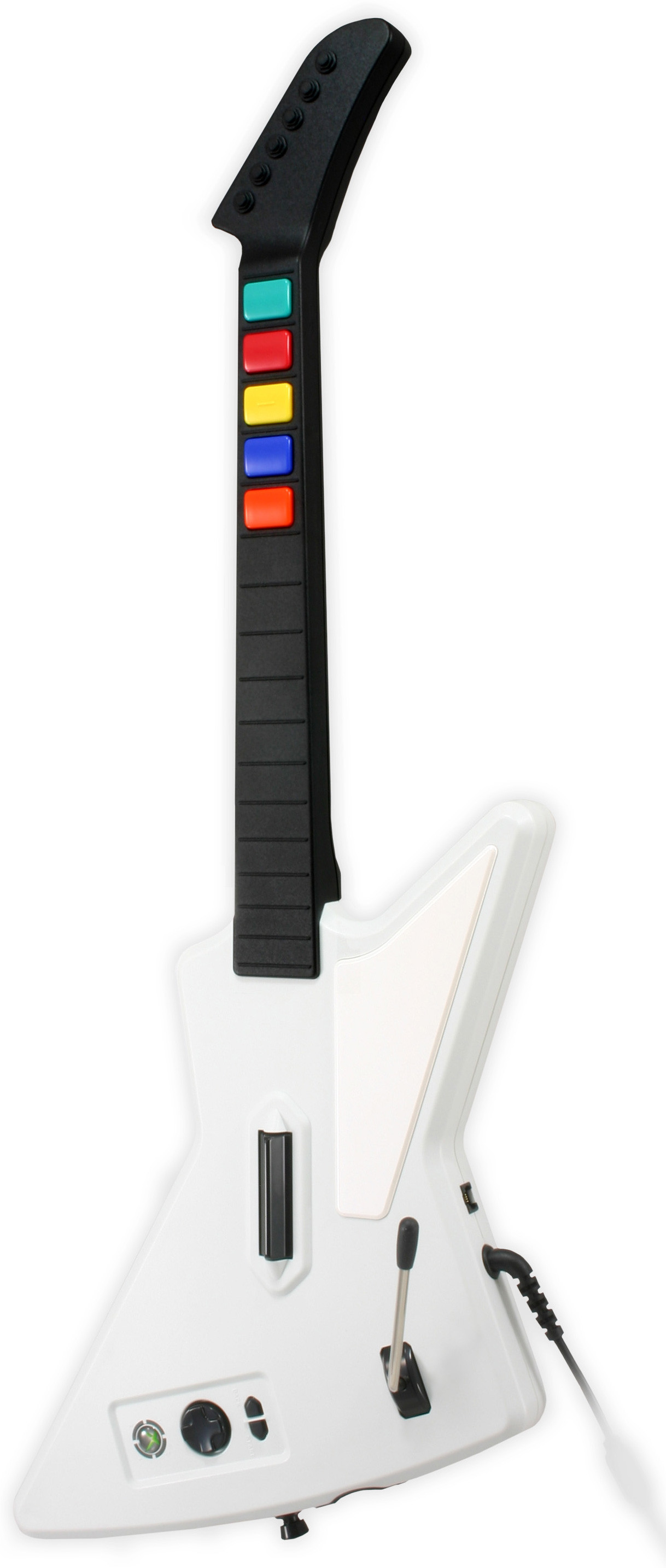 Sleep well, sweet prince of plastic video game instruments
Sleep well, sweet prince of plastic video game instruments
Rock Band 4 champions backwards compatibility, largely delivering on its promise to support legacy Rock Band and Guitar Hero peripherals. My wireless Guitar Hero 3 Xbox 360 guitar seamlessly synced with the Xbox One version of Rock Band 4.
However, it’s not without limitations. Microsoft’s device-signing protocols prevent wired controllers from functioning. This meant retiring my cherished Guitar Hero II Xplorer – my go-to guitar controller for all Xbox 360 Guitar Hero and Rock Band titles.
While this is a specific instance, most wireless last-gen controllers should operate with Rock Band 4 without issue.
Guitar Hero Live takes a different path. Its innovative new button configuration, which we’ll explore in the next section, renders the classic five-color button system obsolete. Consequently, none of your previous controllers are compatible with Guitar Hero Live.
Winner – Rock Band 4
Round 2: Guitar Gameplay – Innovation vs. Tradition in Guitar Hero Live
While Rock Band expanded to include drums, vocals, and keyboards, the guitar remains the iconic instrument for many rhythm game enthusiasts.
Rock Band 4 adheres to the familiar five-color highway system. If you’re experienced with previous Rock Band or Guitar Hero games, you’ll feel instantly comfortable.
The core gameplay remains largely unchanged, with the addition of freestyle solo sections. These sections allow for improvisational playing, where the game attempts to construct a coherent solo from your random notes.
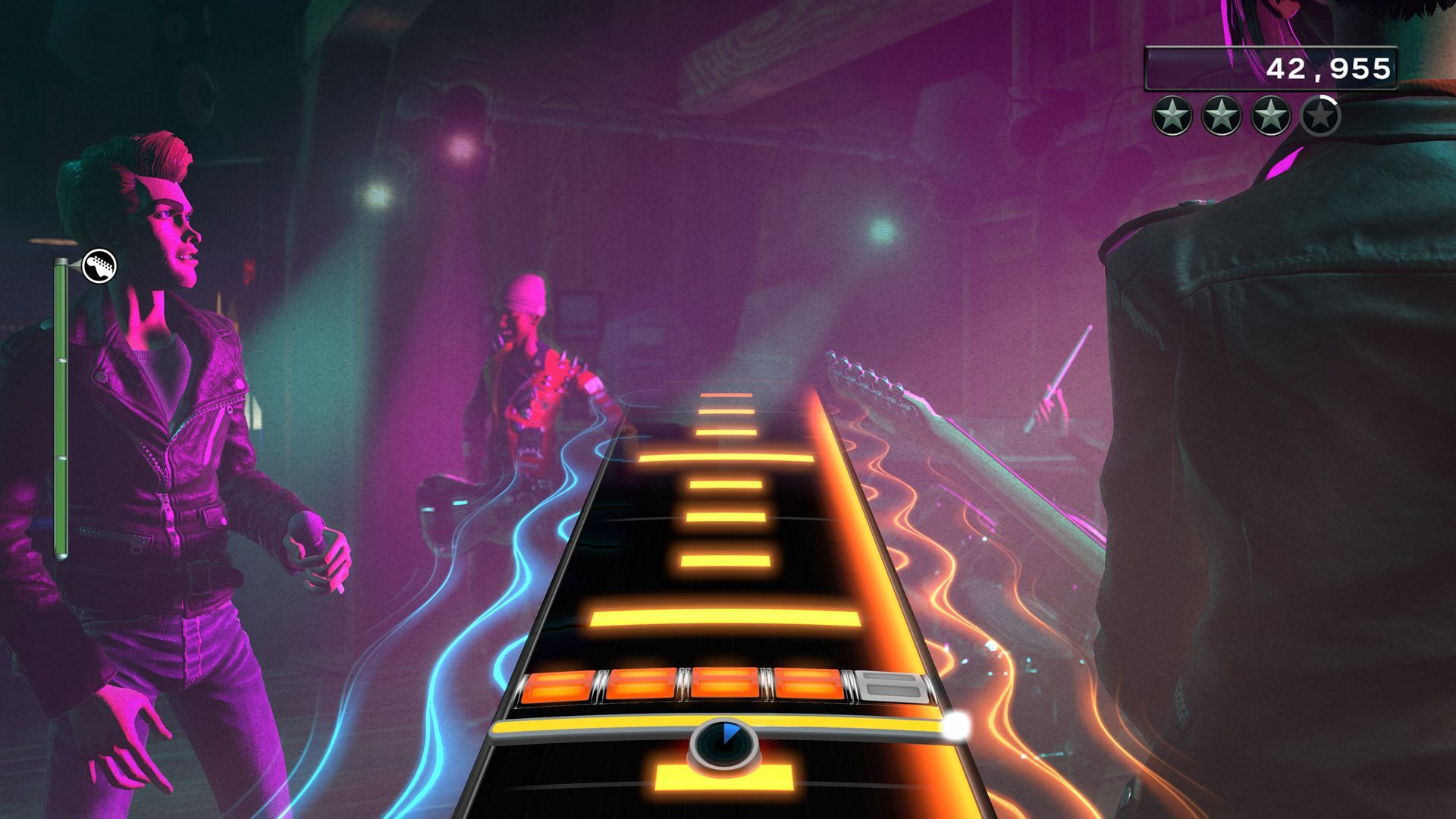 Rock Band 4
Rock Band 4
These freestyle solos, reminiscent of Harmonix’s Fantasia, can be somewhat hit-or-miss in sounding musically pleasing. Thankfully, they can be disabled if preferred.
Guitar Hero Live, in contrast, embraces revolution in guitar gameplay. It abandons the five-color system entirely, introducing a redesigned guitar controller with two rows of three buttons on the fretboard.
This new design fundamentally alters the playing experience, arguably creating a more authentic guitar-playing sensation. On higher difficulty levels in Guitar Hero Live, you’ll navigate complex chord shapes spanning both button rows, delivering a genuinely rewarding sense of accomplishment as muscle memory develops.
This bold redesign was a calculated risk, but developer Freestyle Games, known for their innovative peripherals in DJ Hero, had a proven track record. The Guitar Hero Live system, after a brief adjustment period, genuinely elevates the established five-color standard. For pure guitar playing feel, Guitar Hero Live takes the lead.
Winner – Guitar Hero Live
Round 3: Beyond Guitar – Instrument Variety
This round is decidedly one-sided, as the game titles themselves suggest.
Rock Band 4 continues to emphasize the band experience. Drums, bass guitar, and vocals are integral components, and most wireless legacy controllers (excluding wired) remain compatible.
Regrettably, Rock Band 4 omits keyboard support, sidelining a promising instrument from previous iterations.
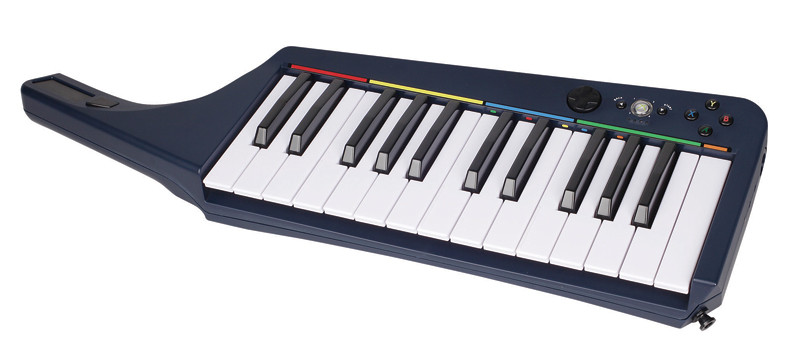 I suppose you can sleep well too, though I
I suppose you can sleep well too, though I
Guitar Hero Live, conversely, focuses solely on the lead guitar experience. It forgoes other instruments entirely. There’s no drum gameplay or even bass guitar options.
While Guitar Hero Live does offer vocal support via a Logitech-compatible microphone or a companion iOS app, the core focus is undeniably mastering the guitar. Other instruments are simply not part of the Guitar Hero Live equation.
Winner – Rock Band 4
Round 4: Visual Design – Live Action vs. Stylized Animation
Visual preference is subjective, so your mileage may vary in this category.
Rock Band 4 maintains a visual style consistent with its predecessors, primarily offering enhanced detail without significant stylistic departures.
The aesthetic remains distinctly Rock Band, with the familiar band creation process and stylized polygonal characters that veterans of the series will recognize.
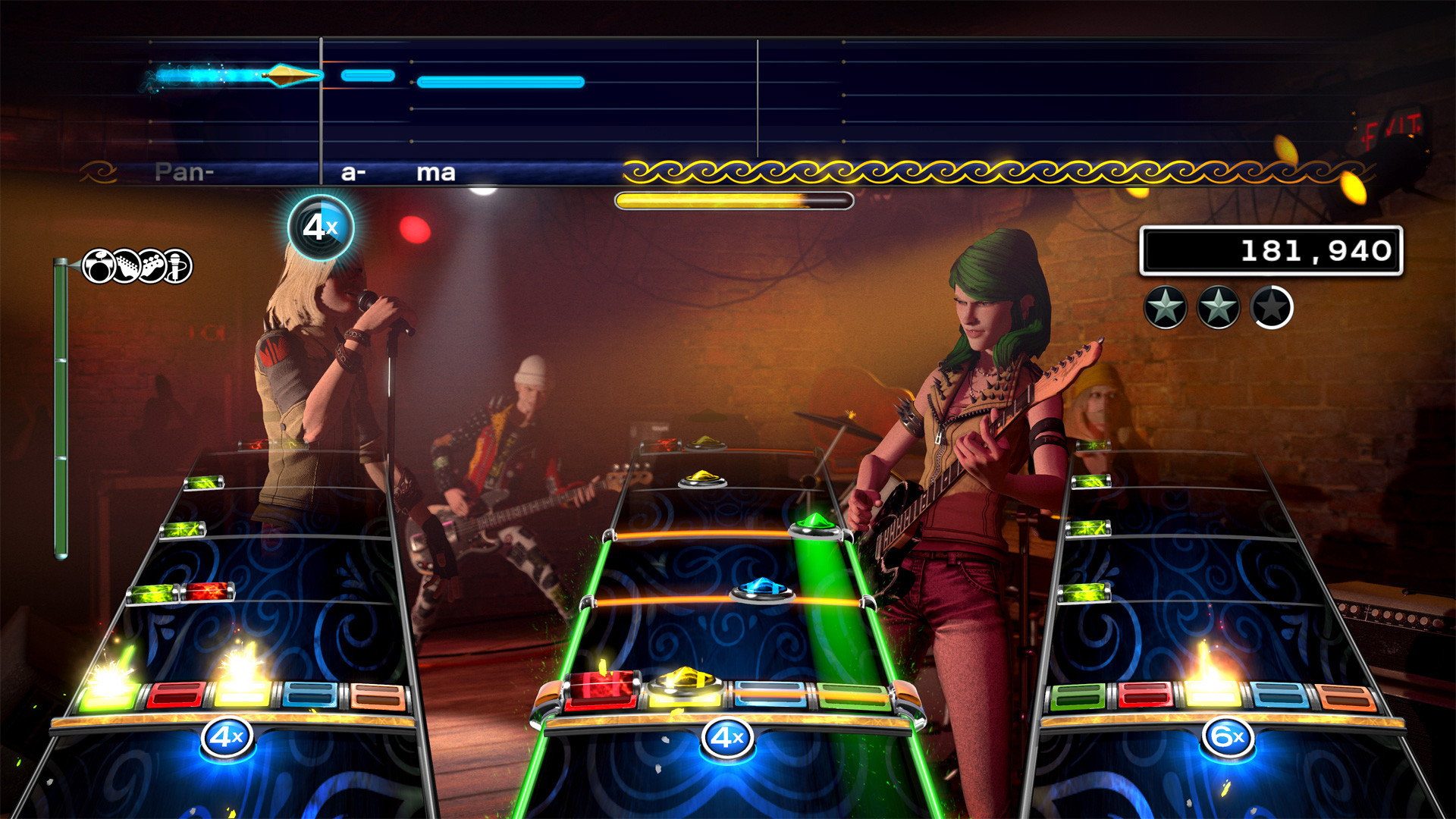 Let
Let
This engine is designed to seamlessly integrate a vast library of downloadable content, ensuring DLC songs visually harmonize with the game’s overall presentation, including character animations and lip-syncing.
Guitar Hero Live adopts a drastically different visual approach, centered around full-motion video, which presents both advantages and drawbacks depending on the game mode.
The Guitar Hero TV (GHTV) mode effectively utilizes this video approach. It functions as a streaming music television channel where you play along to official music videos. This provides a compelling way to discover new artists and songs within the rhythm game context, enhancing the music discovery aspect inherent to the genre.
However, the GH Live section, featuring first-person live concert performances with dynamic crowd reactions based on your performance, is more divisive.
While technically well-executed, the live performances in Guitar Hero Live can feel somewhat artificial. The transition between “good” and “bad” performance videos can be jarring, and the overall aesthetic can veer into cringe-worthy territory, reminiscent of dated FMV games. Furthermore, the idealized, flawless appearance of everyone in this mode—bandmates and crowd alike—can detract from immersion for some players.
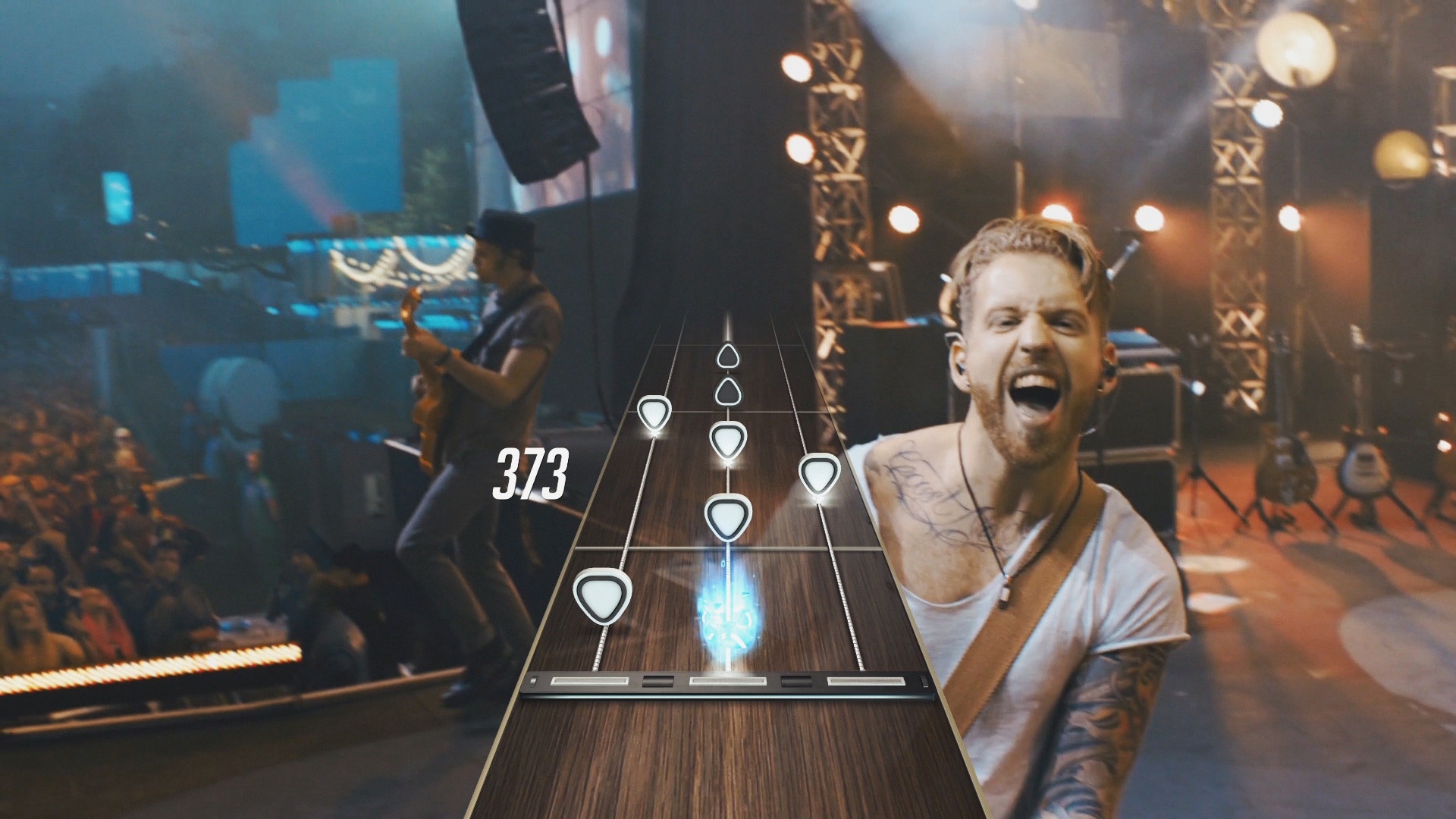 Get off my fucking telly, you complete and utter immaculate moron
Get off my fucking telly, you complete and utter immaculate moron
Despite the GH Live mode’s shortcomings, the GHTV mode’s music video integration and discovery potential arguably give Guitar Hero Live a visual edge over Rock Band 4‘s more conventional presentation.
Winner – Guitar Hero Live
Round 5: Out-of-the-Box Content – On-Disc and Free Music
For players averse to downloadable content, the initial content offering of each game is crucial.
Rock Band 4 includes 65 on-disc songs, spanning a wide range from classic tracks of the 1960s to contemporary hits.
Expanding this song library without purchasing DLC is limited to occasional free songs within the online catalog, which are infrequent. Even importing songs from Rock Band 3 incurs a separate fee.
Guitar Hero Live‘s GH Live concert mode features a smaller selection of 42 on-disc songs, covering a similar historical range.
However, the GHTV mode launched with an impressive 200 music videos available for streaming and play at no additional cost. This library has continued to expand, with over 90 songs added since launch, providing a constant influx of free content.
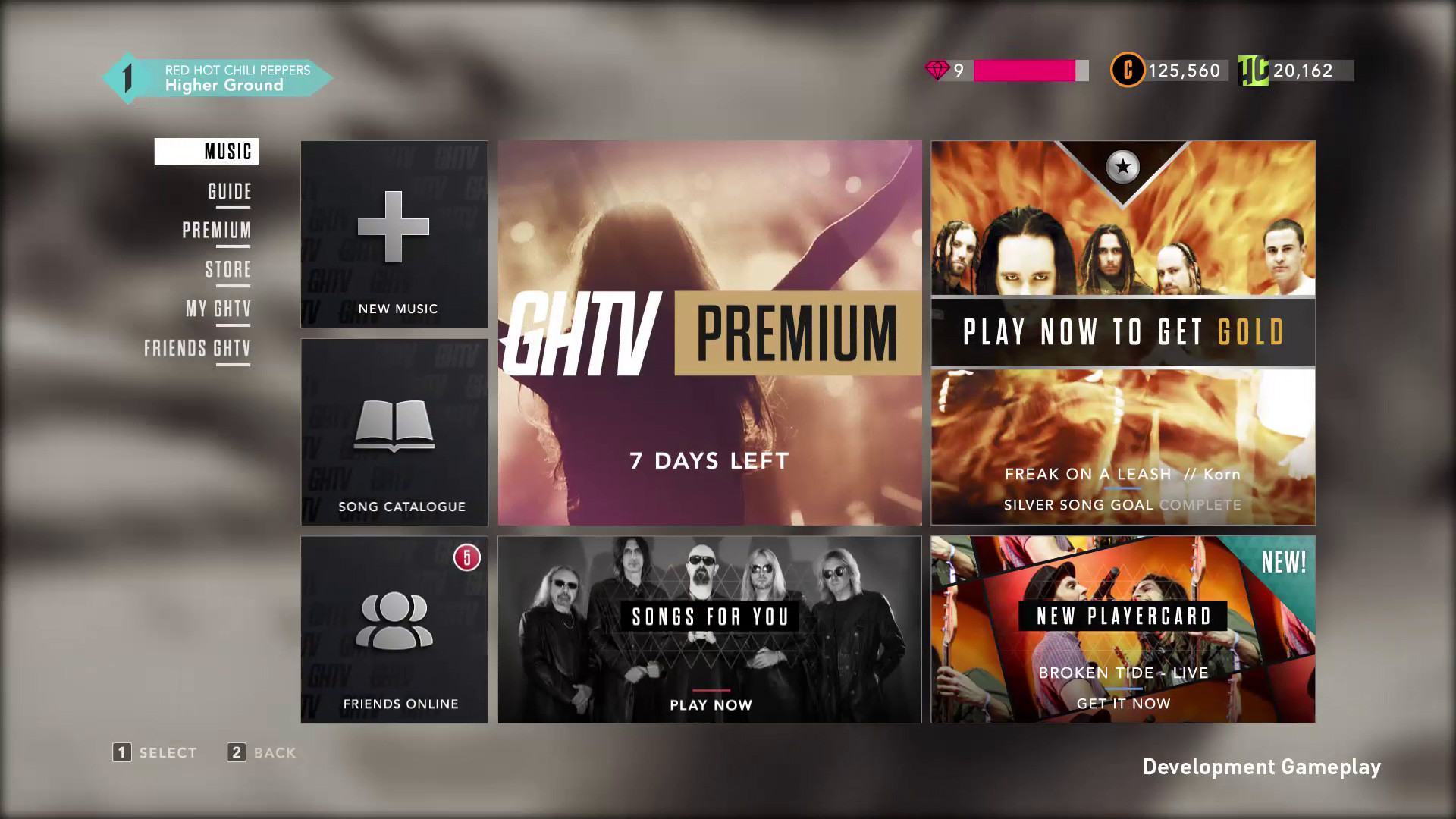 The GHTV mode in all its glory. This is Guitar Hero Live
The GHTV mode in all its glory. This is Guitar Hero Live
While GHTV’s streaming nature means you don’t have immediate access to every song at any time, you can utilize play tokens to select specific songs on demand. These tokens can be acquired with real currency or, importantly for this category, earned through in-game currency by playing the streaming GHTV channels.
Given the extensive and growing library of free, accessible content within GHTV, Guitar Hero Live offers significantly more content for the initial purchase price compared to Rock Band 4.
Winner – Guitar Hero Live
Round 6: Expanding Your Library – Downloadable Content (DLC)
For players willing to invest in downloadable content to expand their song libraries, the DLC ecosystems of each game become relevant.
In this context, Guitar Hero Live becomes less appealing. While GHTV boasts a substantial library, you don’t truly “own” these songs. Beyond the curated streaming channels, playing specific songs requires tokens, which must be continually replenished.
This token system means that repeatedly playing a favorite song, like a hypothetical obsession with Queen’s “Fat Bottomed Girls,” necessitates ongoing token purchases.
Furthermore, the full-motion video nature of the GH Live mode, with bespoke first-person videos featuring actors, makes adding new DLC songs to this mode prohibitively expensive. Consequently, the initial 42 on-disc songs are unlikely to be supplemented with further paid DLC for GH Live.
Rock Band 4 presents a contrasting DLC model. Its engine is designed for seamless DLC integration, and it has capitalized on this strength.
A vast portion of the Rock Band 3 DLC catalog has been ported to Rock Band 4, resulting in a library exceeding 1500 songs available for purchase.
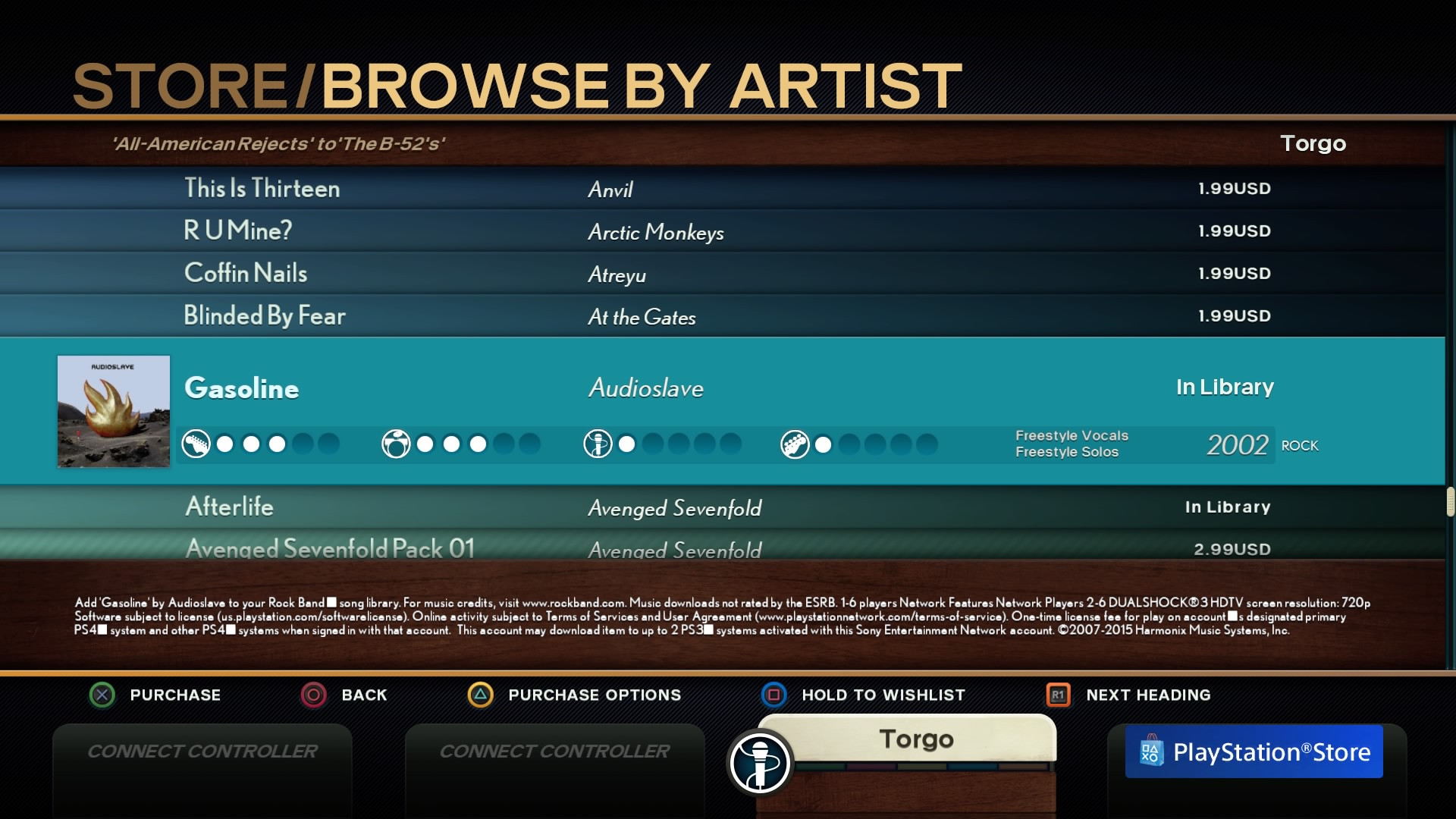 You can even buy Audioslave stuff if you want to pretend it
You can even buy Audioslave stuff if you want to pretend it
Crucially, purchasing a song in Rock Band 4 grants permanent ownership, allowing unlimited play. For players intending to regularly expand their music library through DLC, Rock Band 4 is the superior option.
Winner – Rock Band 4
Round 7: Single-Player Experience – Solo Guitar Hero
Rhythm games cater to both solo and multiplayer experiences. How do Guitar Hero Live and Rock Band 4 fare for solo players?
Guitar Hero Live, with its lead guitar focus, first-person perspective, and omission of other instruments, is clearly designed with single-player gameplay in mind.
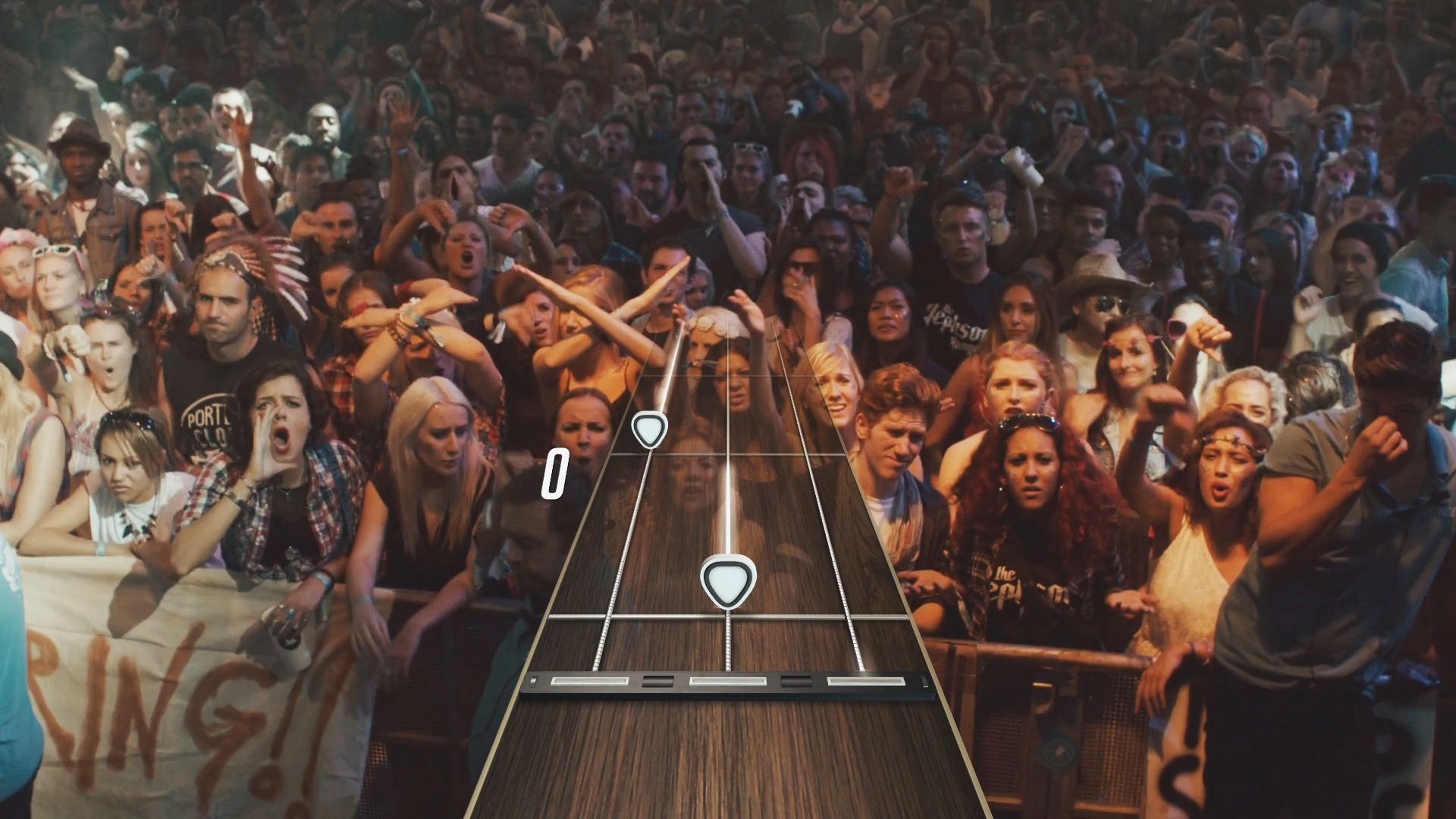 You
You
The GHTV mode emphasizes single-player progression. Creating a profile allows you to accumulate experience points and level up by playing songs. Leveling unlocks customization items like song highway styles and profile icons.
Each song in GHTV also features specific challenges, adding replayability through star-based objectives.
Rock Band 4 offers a less compelling single-player experience. Its Career mode is surprisingly concise compared to previous iterations like Rock Band 3. Beyond the Career mode, solo gameplay primarily consists of Quick Play mode, selecting individual songs.
For a single-player rhythm game experience with a sense of progression and reward, Guitar Hero Live is the more compelling choice.
Winner – Guitar Hero Live
Round 8: Local Multiplayer – Banding Together
While solo play is enjoyable, rhythm games often reach their peak in social, local multiplayer settings.
Guitar Hero Live falls significantly short in local multiplayer. It only supports a second guitar in GHTV mode, and even then, both players are restricted to guitar.
This results in competitive rather than cooperative gameplay, as players simply vie for the higher score. Given the likely skill disparities in local multiplayer scenarios, this competitive focus can detract from the social enjoyment.
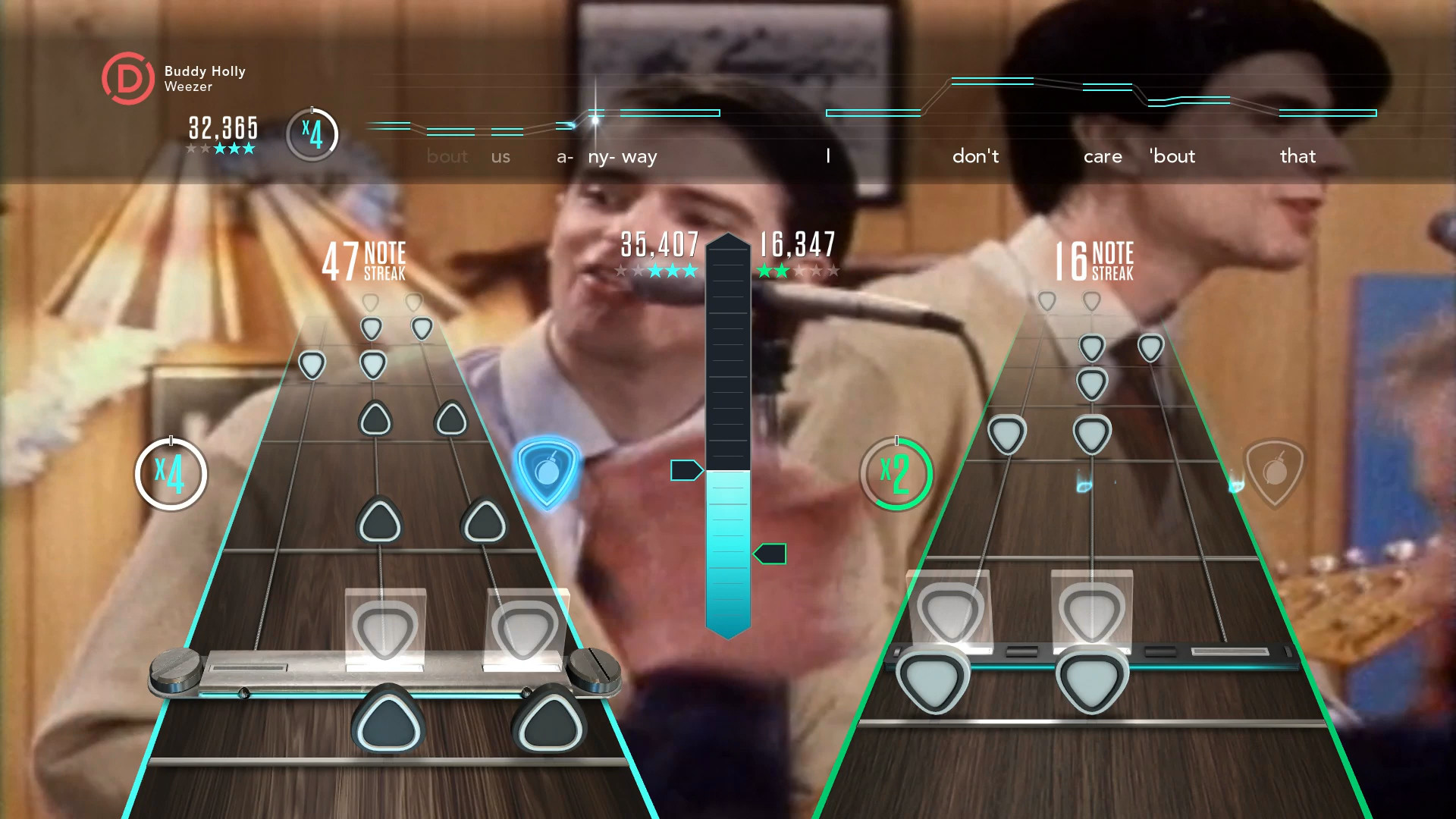 Not even Weezer can make local multiplayer better in Guitar Hero Live
Not even Weezer can make local multiplayer better in Guitar Hero Live
Conversely, Rock Band 4 is explicitly designed as a multiplayer-centric game, and it excels in this area.
While it doesn’t revolutionize the formula, the classic Rock Band experience of four players performing together on guitar, bass, drums, and vocals remains unmatched for social gaming. Harmonix wisely maintained the core multiplayer strengths that made Rock Band a social gaming phenomenon in the previous generation.
For regular local multiplayer sessions, Rock Band 4 is unequivocally the superior choice.
Winner – Rock Band 4
Round 9: Ongoing Updates and Support
Both Harmonix and Activision have indicated that Rock Band 4 and Guitar Hero Live are intended as evolving platforms, continually updated rather than succeeded by new annual releases.
Both games have demonstrated this commitment through post-launch updates. Rock Band 4 has received updates introducing social score challenge features, character customization options, and a challenging Brutal mode.
Guitar Hero Live has also delivered consistent updates. Beyond the continuous expansion of the GHTV song library, new customization options, such as themed note highways, have been added. Furthermore, Guitar Hero Live introduced an online multiplayer mode where players are matched against similarly skilled opponents in GHTV songs for competitive scoring and rewards.
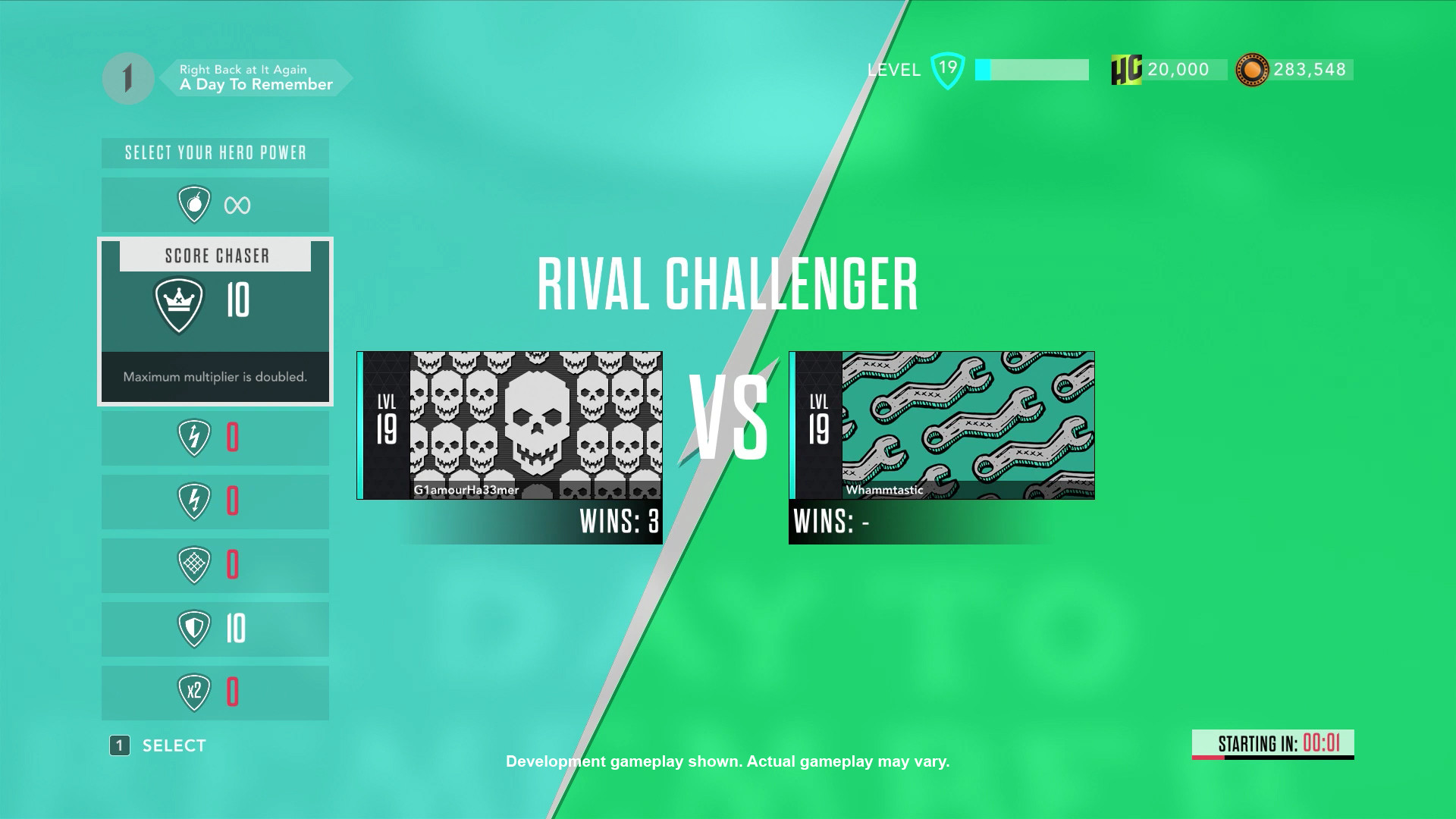 Guitar Hero Live Rivals mode
Guitar Hero Live Rivals mode
Both games are clearly committed to ongoing support, encompassing new content, customization, and gameplay features. Regardless of your choice, both Guitar Hero Live and Rock Band 4 are poised to evolve and improve over time.
Winner – Draw
The Verdict: Your Rhythm Game Hero Awaits
After this comprehensive comparison, the ultimate recommendation depends on your gaming preferences.
If you primarily play solo and anticipate infrequent local multiplayer sessions, Guitar Hero Live is undoubtedly the stronger choice.
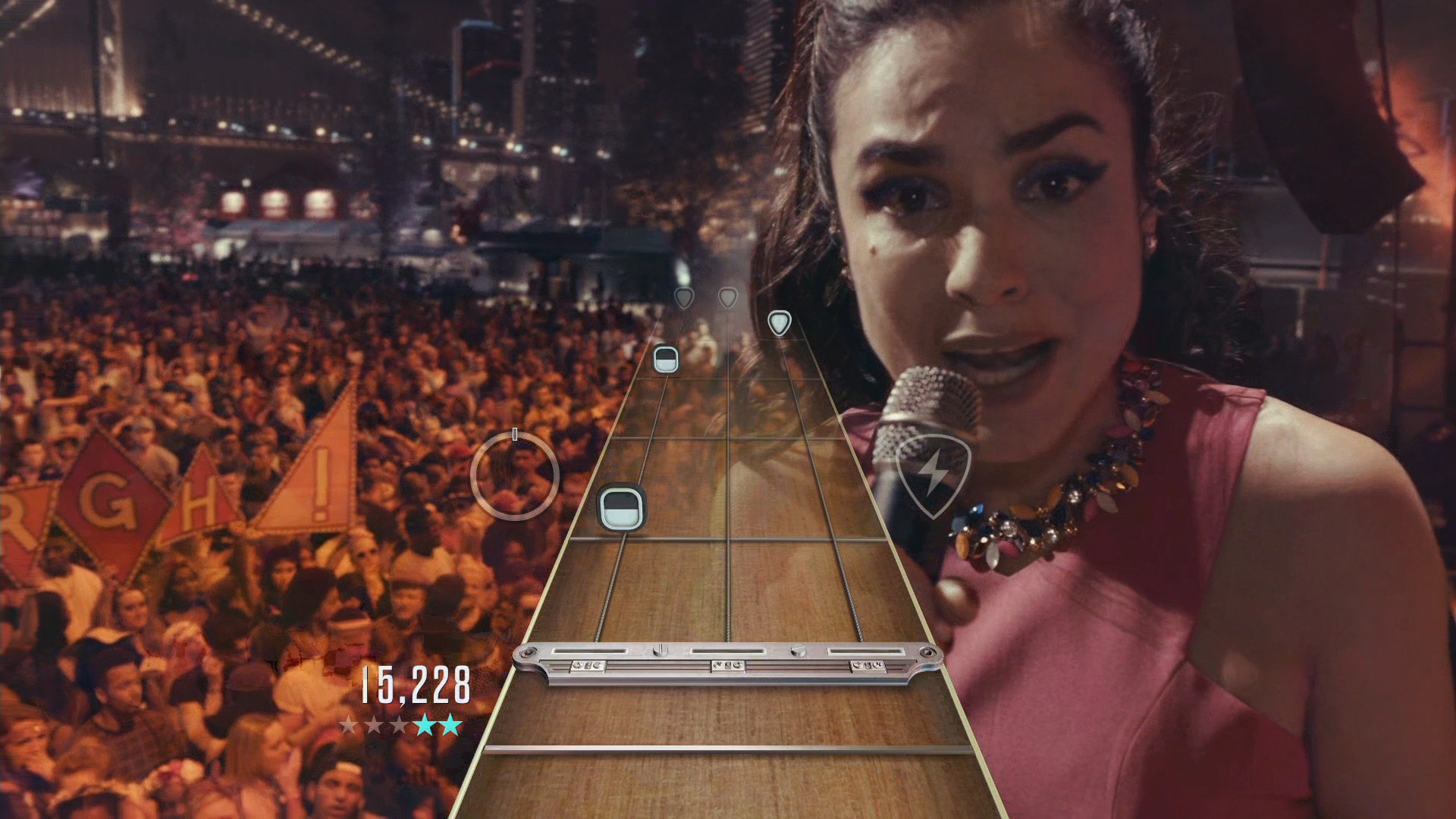 Yes, even despite these beautiful arseholes
Yes, even despite these beautiful arseholes
Despite the GH Live mode’s somewhat cheesy presentation, the GHTV mode and its progression system offer compelling single-player engagement. The innovative guitar controller also provides a fresh and rewarding gameplay experience for rhythm game veterans seeking novelty. As a predominantly solo gamer myself, Guitar Hero Live is my personal preference.
Conversely, if social gaming and local multiplayer are priorities, Rock Band 4 is the clear winner.
 Rock Band 4 pic 2
Rock Band 4 pic 2
While lacking Guitar Hero Live‘s single-player depth, Rock Band 4 excels in multiplayer entertainment. Furthermore, the ability to import a significant portion of previous DLC, especially within the same console family, is a considerable advantage for returning Rock Band players.
Price is also a factor. Guitar Hero Live with a guitar controller is generally more affordable than Rock Band 4 with its guitar bundle. Rock Band 4 becomes cost-effective if you intend to utilize existing legacy instruments.
Finally, for owners of Wii U, Xbox 360, or PS3 consoles, Guitar Hero Live is the only available option, as Rock Band 4 was not released on these platforms.
In summary: for social gamers with friends and DLC budgets, Rock Band 4 reigns supreme. For solo players seeking innovation and value, Guitar Hero Live is the champion. Ultimately, both Guitar Hero Live and Rock Band 4 are excellent rhythm games, each catering to different player preferences.


